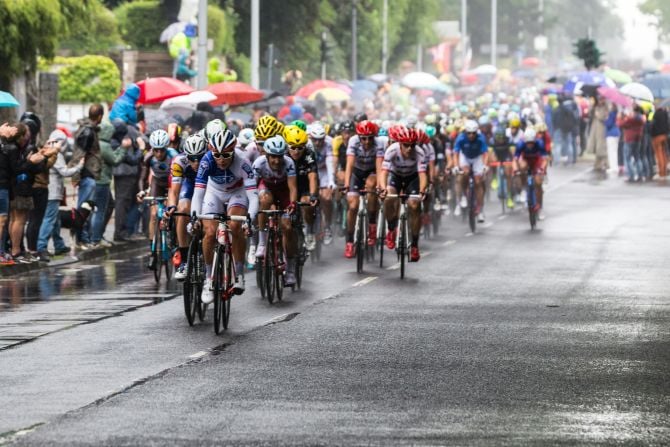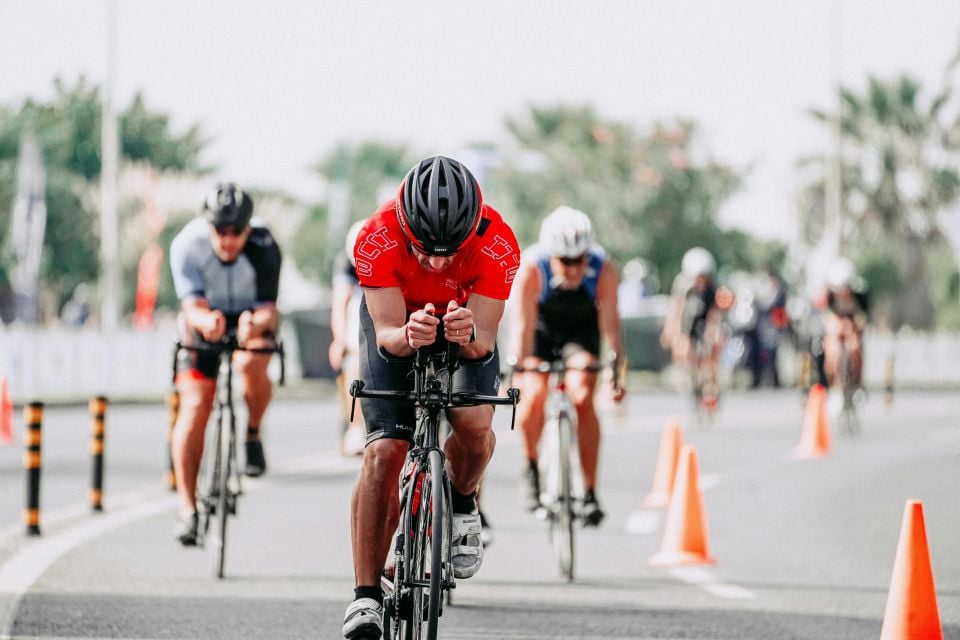Cutting-edge Design
and Materials Used in Cycling Apparel/Clothes Today

Take a look at photos of pro-level cyclists from the early 20th century against the modern weekend rider, and there’s just no comparison in terms of kit. Early cycling outfits consisted of basic wool garments, whereas today even your average amateur has high-quality performance gear. Companies spend a lot of money to develop next-level apparel that not only lifts performance for pro athletes, but improves the experience for the everyday cyclist.
Cycling Kit: Not Just for Professionals
People who aren’t into cycling can be a little disparaging towards cycling apparel; they’ll ask, why is an amateur who doesn’t even compete wearing that ‘ridiculous’ gear?
It can be a pricey endeavor, the clothes are super tight, and does an everyday cyclist really need to shave 1% off their PB? If you’re a cyclist, you know this argument makes no sense.
But for everyone else: advanced materials don’t just improve performance, they also elevate comfort levels. If you’ve ever spent more than 20 minutes on a bike, you know it can get almost intolerable when using poor-quality kit. And whether you’re Greg LeMond or John Doe, the weather and sweat affect you just the same.
From ‘Regular Clothes’ to Optimized Performance
To understand why cycling uses cutting-edge technology that tries to extract every ounce of performance from a rider, the reason companies invest millions into research and development for cyclists, you need to be taken on a small history tour (it’ll be more interesting than high school, we promise!).
Early Days: Wooly and Sweaty
In the early 1900s, when cycling started to take off as a proper sport, wool was the go-to material. Sure, they kept riders warm, but comfortable? Just imagine that wool-to-skin contact, just thinking about it is enough to make you itchy.

In terms of style, most had the classic button-down aesthetic, with recognizable club logos emblazoned on the front. A far cry from the sponsorship-heavy uniforms you see today.

Synthetics Enter the Scene
The 1950s brought about the invention of lycra. Riders wanted jerseys built for performance, pushing innovation to synthetic materials like polyester. During this period, we also saw the introduction of logos and other sponsorship material appearing on cycling jerseys.
Personality and Performance
Today’s cycling apparel combines both performance and style. With the Tour de France and other races now worth millions of dollars, individual riders are brands in their own right, and it’s an important point for sponsors.
We’re seeing incredible advancements in fabrics, material that offers lightweight protection from UV rays, moisture-wicking for optimal performance, and odor-control technology to stay fresh, too.
Now, cyclists like wearing jerseys that not only have utility, but also reflect the personality of the rider or club. The production of customized jerseys is particularly popular, as each aspect of the product can be customized.

Anatomy of a Cycling Outfit
Putting together a cycling kit that works isn’t about spending big money on fancy labels. You want to build a ‘system’ of sorts, one that works for your specific needs. It’s not about fashion, or expensive materials, but utility.
For example, if you’re based in Seattle, where it often rains, you need a multi-tool kit that can face adverse weather conditions. If you’re out in the sun a lot, protecting yourself from the rays is an important consideration.
Apparel today is made with ultimate function in mind, using the latest lightweight materials to ensure you are comfortable:
The Key Piece: the Jersey
Other than your bike, the key piece of kit is the cycling jersey, the staple of the cycling wardrobe. Even if you do not cycle competitively, a great jersey will infinitely improve your experience on the road.
There’s a lot of science that goes into creating the perfect jersey. Innovations are tested in wind tunnels, meticulously measured, creating the most efficient aerodynamic jersey possible.
In a race, marginal differences are everything. For weekend riders, it’s a more comfortable jersey, one that wicks sweat efficiently, is ultra-lightweight, and stretches in all the right places.


And there’s the challenge of seamlessly integrating sponsors and team logos. At owayo, for example, patent-pending 3DDSN-Technology enhances the performance of jerseys by integrating custom elements into the fabric itself, without adding weight or impediments to moisture-wicking technology.
Base Layers
When it’s cold, a base layer is an absolute must. It gives your body an extra layer of insulation, driving sweat away from the body, which ensures you stay warm and dry.
When it’s warm out, a base layer still has a use case. Purpose-built summer base layers are designed to help move sweat, shifting it away from the body more effectively, and keeping you cool.
In terms of material, merino wool is popular with a lot of cyclists. But when you’re sweating heavily, this natural material is simply not as effective as Lycra, a synthetic fiber.
Headgear
In the old days of cycling, helmets were a rarity. Instead, you had the cycling cap. This stylish piece of kit wasn’t just for fashion, as it kept a rider’s hair in place and offered basic protection from the elements.
The cap was pushed into near-extinction, however, when the unfortunate death of Andrei Kivilev led to the UCI (Union Cycliste Internationale) passing the sensible rule to make helmets compulsory in racing.
Since then, the demand for helmets has led to improved performance across the board, with even the average commuter benefiting from rapid technological innovation.
The cycling cap still enjoys popularity, but mainly by weekend cyclists, when the Sunday ride in low traffic poses fewer risks. Many will also wear the cap under the helmet, letting its style shine when at a rest stop.

Waterproof Breathability
Every cyclist will have to endure wet weather, it’s inevitable. Luckily, we now have materials that are lightweight, very breathable, and will stop you from getting wet.
This kind of gear does require a more generous investment. Gore-Tex is the most common go-to material for many people, but competitors now have their own-brand equivalents that offer similar results.
The key is breathability. You want moisture from your body to have a means of escape, otherwise, perspiration will leave you feeling just as damp as the rain. Instead of opting for low-cost rain jackets that trap heat like a plastic shell, invest in a well-ventilated, waterproof jacket designed to keep you dry inside and out.
Cycling Apparel: Antithesis to Fast Fashion
Investing in high-quality cycling apparel isn’t just about style — it’s about performance, durability, and sustainability. Unlike fast fashion, a well-chosen kit is designed to last many years, adapting to all weather conditions while providing unmatched comfort on every ride. The best cycling gear isn’t just something you wear, it becomes an essential part of your journey, ensuring that every mile from point A to point B is as smooth and enjoyable as the last.
Image credits: Title image: Unsplash.com; Image 2: KOERS. Museum of Cycle Racing, CC BY-SA 4.0